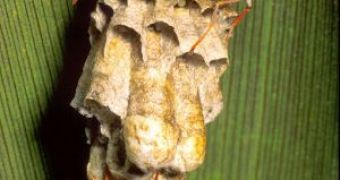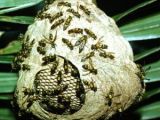Researchers have found that a key region in the brain of the social insects is crucial in the development of the colonial behavior of the social insects.
"This finding, the first of its kind, contrasts with most of the prior work on social insect brain development. Earlier studies, including one of ours, were done on highly social species with large colony sizes. Among these species, age plays an important role in task performance and workers that leave the nest to forage generally have better-developed brains," said Sean O'Donnell, a University of Washington associate professor of psychology.
"We found the opposite pattern with a primitively social wasp. Here, the stay-at-home dominant females had better brain development. In this species, direct dominance interactions among the females dictate task performance. Dominance and social interactions were more important than foraging tasks in explaining brain development."
Scientists investigated the brain of a primitively social paper wasp, Mischocyttarus mastigophorus (photo above), from the mountain cloud forest of Monteverde, Costa Rica.
This species lives in small colonies of few to several dozen individuals where the labored division of labor is dictated by aggression.
The scientists were particularly interested in some cerebral centers named the mushroom bodies.
There is a pair of mushroom body, one center on each hemisphere, neurally connected through a structure called calyx.
Examining the brain of individuals from the wasp nests, the team found that the queens and the stay-at-home females had large calyxes.
Larger brains is exactly the opposite of what occurs among highly social species with large colonies.
The same team had discovered that among the species of Polybia aequatorialis (photo bellow), a highly social paper wasp from the same area, the individuals, with the age, take more individual specialized works, so workers that leave the nest to bring food generally have better-developed brains to deal with more complicated tasks.
"It seems pretty clear that primitively social colonies were the ancestral condition and that highly social colonies developed and evolved from them, said O'Donnell. The pattern of brain development found in Polybia, a highly social group of wasps, is the same as in honey bees, another highly social insect."
"This shows that what job you do puts pressure on brain development in the highly social species," he said.
"In contrasts, status seems to be the major brain demand in the primitively social species. This research suggests that task behavior and brain development has changed in a fundamental way between primitively social and the larger more complex social insect colonies."
This study is a glimpse on how brain development and social complexity are linked.
"The evolution of our own society may affect brain development. Social behavior places pretty heavy demands on the human brain."

 14 DAY TRIAL //
14 DAY TRIAL // 
